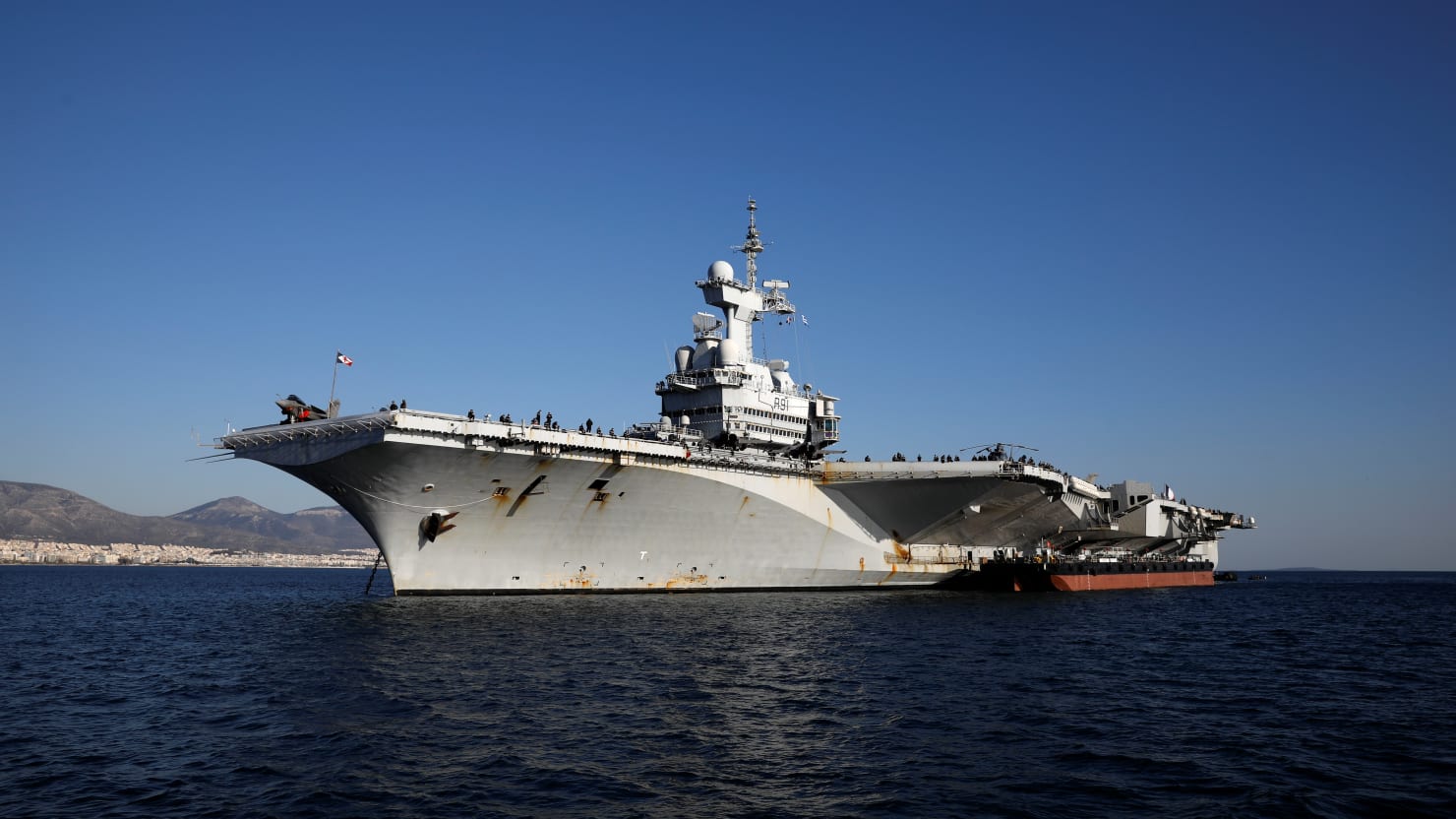As China launches its Type 003 ‘Fujian’ aircraft carrier, attention has now turned to its upcoming Type 004 flat top, possibly a nuclear-powered vessel that would mark its entry as a truly maritime power rivaling the United States.
Russia’s 200 Year-Old ‘Artillery First’ Doctrine That Devastated Ukraine Even Outranges & Outguns US Systems
The Type 004 would operate the FC-31 ‘Gyrfalcon’ 5th generation stealth fighter, currently being tested and improved for carrier operations.
Atomic propulsion on the 80-85,000 ton-class ‘Type 004’ will make China the first to have a carrier that can stay out at sea for months, ticking at least the technological box of a true blue water nation.
With the ‘Fujian,’ China directly leaped to an Electromagnetic Launch System (EMALS) from the Short Take-Off but Arrested Landing (STOBAR) ski-jump on the Liaoning and Shandong – skipping the Catapult Assisted Take-Off But Arrested Recovery (CATOBAR) system.
A STOBAR system involves a ski-jump on a carrier flight deck, with jets taking off from it under their power. In CATOBAR, a steam-powered catapult launches fixed-wing aircraft, allowing them to save energy and take off with more load. EMALS, on the other hand, perform the same function but with the catapult powered by an electromagnetic system.

However, refining its carrier and naval air arm operating skills will take more than a decade. Neither would China operate more than four carriers, unlike the US Navy’s 11, whose 3000-plane naval air arm rivals most air forces.
The ‘Type 004’ will be a nuclear-powered vessel, allowing it to stay out at sea longer with more fuel, cargo, ammunition/ordnance, and aircraft because of the space created with the loss of a large gas turbine. Nuclear power can also propel more powerful EMALS systems and possibly even Directed Energy Weapons (DEW), high-powered lasers, and rail guns.
These ‘space-age’ weapons also have a secondary Ballistic Missile Defence (BMD) and Anti-Satellite (ASAT) utility if the Central Military Commission (CMC) envisions such a role. The carrier can better protect itself from airborne threats when combined with regular weapons, possibly reducing the load on escorting destroyers and frigates.
It is like the Aegis combat systems on some of the Arleigh Burke-class destroyers combined with the Standard Missile series can serve as Direct Ascent weapons to take out satellites, besides their primary role as long-range surface-to-air missiles.
Type 004’s nuclear propulsion configuration was confirmed in 2019 when China General Nuclear Power Group (CGNPG) invited bids to build an “experimental” nuclear-powered ship. Sources said it was to test the reactors’ efficacy while powering aircraft carriers. The People’s Liberation Army Navy (PLAN) already has nuclear-powered submarines like Type 091, Type 093, and Type 095.
RED ALERT! Russia’s Nuke-Capable Iskander Missile ‘Goes Haywire’ While Striking Ukraine; Kiev Reacts
The control tower on the fourth carrier might be smaller than a conventionally powered one, given the elimination of chimneys for emissions. While the overall design is not yet known, a smaller control tower (or ‘island’) would also free up space for more aircraft, giving it an excellent ‘throw’ weight.
The FC-31, meanwhile, is slated to operate from Type 004. The fifth-generation jet – originally a technology demonstrator for various materials and aviation technologies – had been undergoing trials from mock carrier decks as per leaked photos from June last year and March this year.
The former showed FC-31 and J-15 Fei Sha (Flying Shark) dummies on a mock-up carrier deck, indicating they are pushed to being inducted into the naval air arm. The J-15 is a copy of the Russian Su-33.
The March 2022 satellite pics of the PLA Naval Aviation Testing and Training Complex at Liaoning showed FC-31s alongside J-15s (‘Flying Shark’), that already fly from the Liaoning (26 in numbers) and the Shandong carriers (32 units).
Interestingly, while the Shenyang Aircraft Corporation (SAC)-made FC-31 was earlier turned down by the PLAN and the People’s Liberation Army Air Force (PLAAF), it was revived to be improved for carrier operations after growing tensions with the US in the Western Pacific since the Donald Trump administration.
Graveyard Of Air Force! Ukraine’s 2nd ‘Mad Attack’ To Retake Snake Island Ends In Disaster For UAF — Russia
And the J-15 itself has had a troubled history with two aircraft lost and two damaged, which Chinese military aviation expert Rick Joe explains is understandable for a country completely new to fixed-wing naval aviation.
Flying since 2012 as the “first-ever carrier-capable aircraft of the PLAN” that also “lacked a dedicated trainer aircraft…four accidents appears reasonable if not surprisingly low.”
China still lags in niche technologies like metallurgical and material sciences before the US. But it is incredulous to assume its defense industry has not corrected some of the airframe design flaws in subsequent production variants that crept in, while reverse-engineering the original Russian Su-33.
It could not have had a choice either, since the stealth J-20 was denied by PLAN Rear Admiral Zhang Zhaozhong to be ever used from a carrier since its structure and components were developed for exclusively land-based use.
The fundamental drawback being its wings can’t be folded to cram itself into the limited space on the flight deck and the packed hangar underneath it.
Referring to the FC-31, Beijing-based aviation expert Li Jie said it was risky to “fly a new aircraft on a totally newly designed aircraft carrier,” meaning it is ruled out from operating from the Fujian.
Its tests and improvements are therefore likely to be aligned over the two to three years by the time Type 004 is launched.
- The author can be reached at satamp@gmail.com
- Follow EurAsian Times on Google News